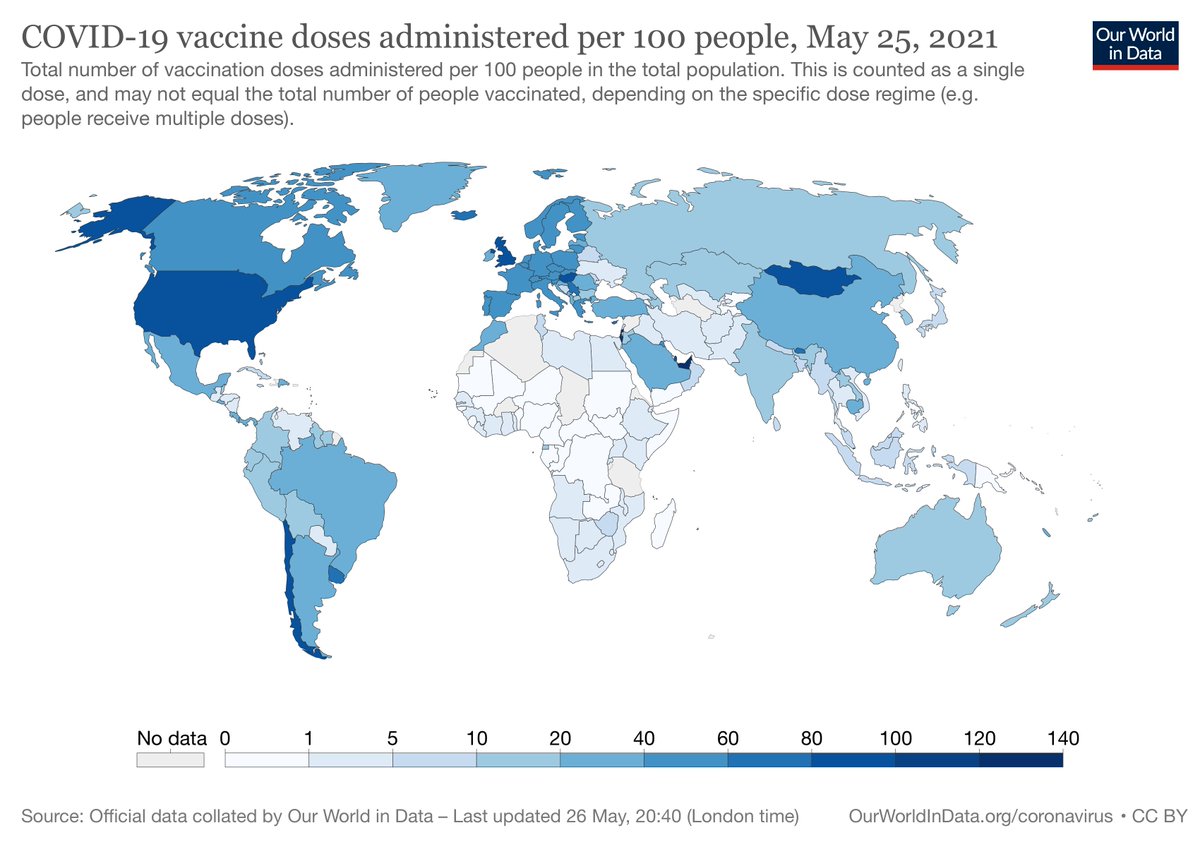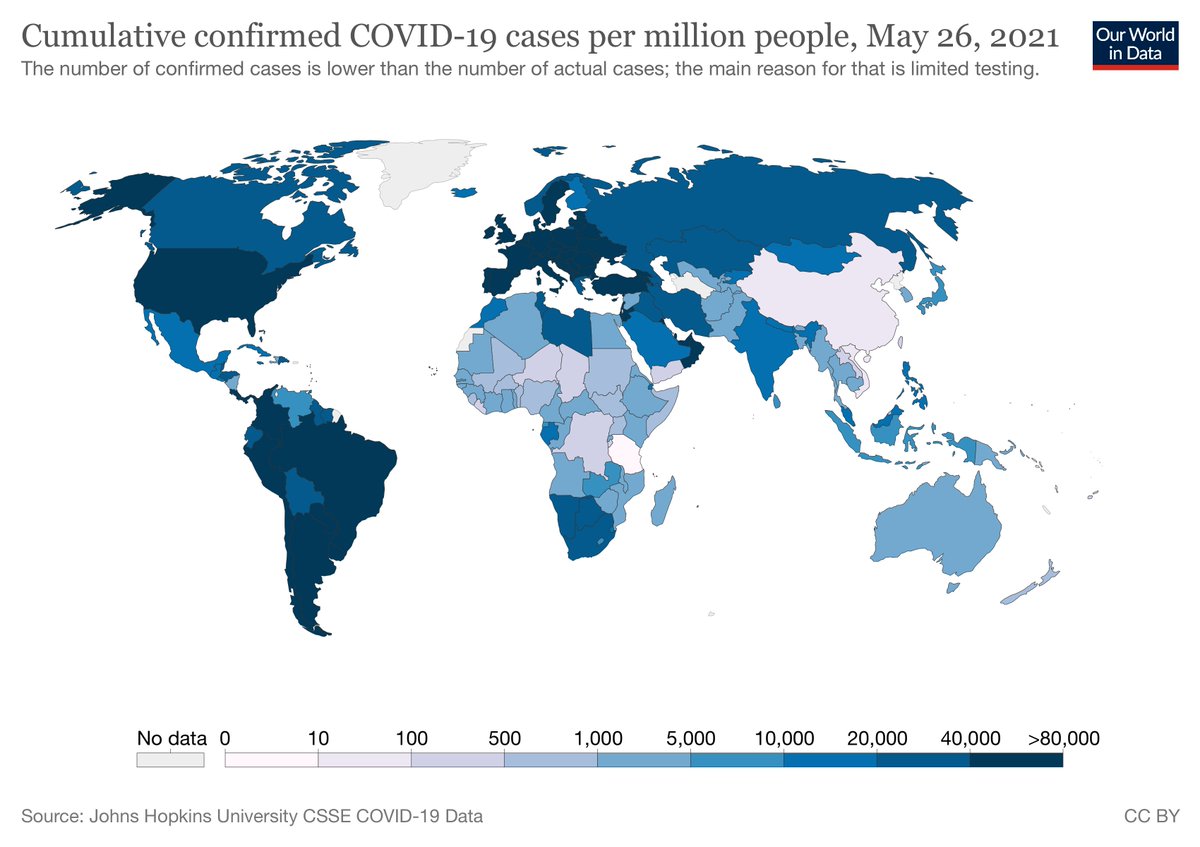
Don't know how common this feeling is among mathematical epidemiologists but as someone who has worked on population dynamics of infection & immunity for 20 years I felt hopeless to see herd immunity threshold (HIT) concept degenerating in front of my eyes during pandemic. Thread
1/n
HIT is an abstract concept essential to our work but it was hijacked early in the Covid-19 pandemic and disseminated with all sorts of distortions that prevented the impact of its application by those qualified.
HIT is an abstract concept essential to our work but it was hijacked early in the Covid-19 pandemic and disseminated with all sorts of distortions that prevented the impact of its application by those qualified.
2/n
A population invaded by an infectious agent (say a virus) achieves HIT when the sum of the immunities acquired by all its individuals is such that the virus cannot cause another epidemic wave.
A population invaded by an infectious agent (say a virus) achieves HIT when the sum of the immunities acquired by all its individuals is such that the virus cannot cause another epidemic wave.
3/n
Way to visualise an approximation to this is by imagining a pandemic occurring without mitigation, and people infected each day being recorded. Typically HIT is the percentage of the population who has been infected (and acquired immunity or died) by the time epidemic peaks.
Way to visualise an approximation to this is by imagining a pandemic occurring without mitigation, and people infected each day being recorded. Typically HIT is the percentage of the population who has been infected (and acquired immunity or died) by the time epidemic peaks.
4/n
This representation gave rise to numerous difficulties which I try to summarise:
A) Model-based inference. In pandemic people modify behaviour, making direct measurement of HIT impossible. Even if behaviour had not changed, HIT could only be measured after peak, which would
This representation gave rise to numerous difficulties which I try to summarise:
A) Model-based inference. In pandemic people modify behaviour, making direct measurement of HIT impossible. Even if behaviour had not changed, HIT could only be measured after peak, which would
5/n
be too late to be useful. Mathematical epidemiologists develop models that enable indirect inference of HIT from incomplete timeseries of cases, hospitalisations and deaths. These inferences come with uncertainties difficult to quantify.
be too late to be useful. Mathematical epidemiologists develop models that enable indirect inference of HIT from incomplete timeseries of cases, hospitalisations and deaths. These inferences come with uncertainties difficult to quantify.
6/n
B) Differences between individuals. The representation of HIT as a percentage of the population could only be unambiguous if all immunised individuals contributed same amount to population immunity. But in reality some individuals are more susceptibly than others
B) Differences between individuals. The representation of HIT as a percentage of the population could only be unambiguous if all immunised individuals contributed same amount to population immunity. But in reality some individuals are more susceptibly than others
7/n
and consequently their immunisation has more weight. Since the epidemic tends to affected more susceptible individuals first, HIT is attained with a lower percentage of the population having been infected. At beginning of pandemic we don't know how variable susceptibility is.
and consequently their immunisation has more weight. Since the epidemic tends to affected more susceptible individuals first, HIT is attained with a lower percentage of the population having been infected. At beginning of pandemic we don't know how variable susceptibility is.
8/n
Worse, we don't know how to measure individual susceptibility directly much less to build the distribution of susceptibilities of individuals that constitute population. To circumvent this, we developed a method to infer these distributions indirectly for use in HIT research.
Worse, we don't know how to measure individual susceptibility directly much less to build the distribution of susceptibilities of individuals that constitute population. To circumvent this, we developed a method to infer these distributions indirectly for use in HIT research.
9/n
C) Viral evolution. Viruses undergo mutations and natural selection tends to favour those variants which are more transmissible or less naturalisable by acquired immunity. In general such variants expand in abundance and become dominant causing HIT to increase over time.
C) Viral evolution. Viruses undergo mutations and natural selection tends to favour those variants which are more transmissible or less naturalisable by acquired immunity. In general such variants expand in abundance and become dominant causing HIT to increase over time.
10/n
D) Seasonality. Respiratory viruses are more transmissible in cold and dry environments, which in temperate climates corresponds to winter season. Consequently timeseries that inform HIT inferences should ideally include at least one winter. So what should we do if the
D) Seasonality. Respiratory viruses are more transmissible in cold and dry environments, which in temperate climates corresponds to winter season. Consequently timeseries that inform HIT inferences should ideally include at least one winter. So what should we do if the
11/n
pandemic begins in the spring? Wait until following winter to estimate HIT? Of course not! We begin estimation as soon as possible and update as pandemic unfolds. But we cannot stay fixed to first estimates especially given the expectation for HIT to increase in winter.
pandemic begins in the spring? Wait until following winter to estimate HIT? Of course not! We begin estimation as soon as possible and update as pandemic unfolds. But we cannot stay fixed to first estimates especially given the expectation for HIT to increase in winter.
12/n
E) Population turnover. It is common for pandemic respiratory viruses to become endemic. Virus continues to circulate causing seasonal epidemics. So what happens with herd immunity? Is HIT unreachable? No, HIT is reached any time there is a seasonal epidemic.
E) Population turnover. It is common for pandemic respiratory viruses to become endemic. Virus continues to circulate causing seasonal epidemics. So what happens with herd immunity? Is HIT unreachable? No, HIT is reached any time there is a seasonal epidemic.
13/n
But if HIT is reached why are there any subsequent epidemics at all? Because the population is in constant renewal with elderly ending life and susceptible babies beginning (waning immunity has similar effect as far as renewal of immunity goes). This way population immunity
But if HIT is reached why are there any subsequent epidemics at all? Because the population is in constant renewal with elderly ending life and susceptible babies beginning (waning immunity has similar effect as far as renewal of immunity goes). This way population immunity
14/n
declines and eventually drops below HIT again, ie, conditions to sustain epidemics are restored. Fortunately, severity tends to be much lower in comparison with initial pandemic waves. In endemic state people are naturally exposed early in life, when infection is mild, and
declines and eventually drops below HIT again, ie, conditions to sustain epidemics are restored. Fortunately, severity tends to be much lower in comparison with initial pandemic waves. In endemic state people are naturally exposed early in life, when infection is mild, and
15/n
continue to be repeatedly exposed throughout life maintaining protective immunological memory. This process tents to lose efficacy in older ages at which point regular vaccination gains importance, such as in the case of influenza.
continue to be repeatedly exposed throughout life maintaining protective immunological memory. This process tents to lose efficacy in older ages at which point regular vaccination gains importance, such as in the case of influenza.
16/n
Finally, what I want to communicate here is that the use of HIT during the pandemic, by policy makers and media, has not been consistent with the population phenomena above. Understanding HIT is useful early in the pandemic and subsequent use requires constant update.
Finally, what I want to communicate here is that the use of HIT during the pandemic, by policy makers and media, has not been consistent with the population phenomena above. Understanding HIT is useful early in the pandemic and subsequent use requires constant update.
17/n
But the utility of the HIT becomes lower as the pandemic progresses. I would say that the utility of HIT for Covid-19 in the most affected and/or vaccinated regions expired during the first semester of 2021.
But the utility of the HIT becomes lower as the pandemic progresses. I would say that the utility of HIT for Covid-19 in the most affected and/or vaccinated regions expired during the first semester of 2021.
18/n
In European countries, in particular, there seems to be little sense in continuing to aim for herd immunity to the new coronavirus. The situation we are at may be identical to where we will be in 1 year, 2, 3, 4, and so on, and we cannot continue to prioritise a disease
In European countries, in particular, there seems to be little sense in continuing to aim for herd immunity to the new coronavirus. The situation we are at may be identical to where we will be in 1 year, 2, 3, 4, and so on, and we cannot continue to prioritise a disease
19/n
that seems no longer more important than many others, including those caused by other respiratory viruses which have been suppressed by anti-coronavirus measures but will most likely return this coming winter.
that seems no longer more important than many others, including those caused by other respiratory viruses which have been suppressed by anti-coronavirus measures but will most likely return this coming winter.
20/n
HIT is fundamental in cost-benefit analysis of possible measures to mitigate or suppress pandemic but its estimation must be early and accurate. Biases that exaggerate HIT result in exaggerated strategies while biases that diminish HIT results in insufficient measures.
HIT is fundamental in cost-benefit analysis of possible measures to mitigate or suppress pandemic but its estimation must be early and accurate. Biases that exaggerate HIT result in exaggerated strategies while biases that diminish HIT results in insufficient measures.
21/n
In this pandemic a complexity of factors has created a powerful tendency for HIT overestimation. Which factors and how they interacted to produce such dominant pro-lockdown current seems an important topic for transdisciplinary research in years to come.
In this pandemic a complexity of factors has created a powerful tendency for HIT overestimation. Which factors and how they interacted to produce such dominant pro-lockdown current seems an important topic for transdisciplinary research in years to come.
better phrasing: "we cannot forever prioritise" instead of "we cannot continue to prioritise"
it should be clear from the thread that this is what was meant but better be sure
it should be clear from the thread that this is what was meant but better be sure
• • •
Missing some Tweet in this thread? You can try to
force a refresh






